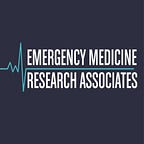EM Conference by Sophie and Vai (5.18.21)
Sophie
One of the most fascinating components of the EM Conference I attended was the discussion of how to expand access to language diverse health care for a variety of different communities, when accessing care through UCLA Health. One of the programs aiming to address this goal was a language certification process for residents. This would allow bilingual and multilingual residents to interact with and care for non-English speakers in a way that prevents harm or misinformation. The ability to speak in a given language in a healthcare setting is heavily regulated; this is in order to ensure that individuals who do not have the necessary language skills to provide care for a patient do not accidentally do so, and make an error or harm the patient. Thus, this program would allow a feasible way to ensure that the proper individuals are fulfilling this role. The physicians discussed the certification process which would consist of tests that would be administered through the hospital. Overall, I felt that this was very pertinent to the role of EMRA in the ED, in that EMRA often enrolls non-English speakers in our studies. By having residents who are certified to be able to communicate with non-English speaking patients, EMRA would be able to expand and diversify the sample of those who are enrolled incur studies. As a result, this could lead to more accurate results and better health outcomes.
The other linguistic program that was discussed was how to improve the use of video remote translating services for sign language. Residents and physicians attending the conference discussed different ways to ensure that these services are properly utilized within the hospital and that the equipment is well maintained. I truly enjoyed watching the ED residents and physicians working together to better establish methods and solutions. As pre-med students, oftentimes we are not exposed to the collaborative and solution seeking sides of medicine in which physicians and residents must band together to discuss unit logistics. Consequently, I truly enjoyed this aspect of the conference, as it was an incredible opportunity to observe discussions beyond complicated cases and diagnoses.
Vai
A few weeks ago, I had the privilege of attending an Emergency Medicine Departmental Conference that featured presentations on identifiable characteristics of ultrasound images for heart diseases and the unique appearance of seizures neonatal patients. Dr. Savitsky’s discussion on membranous ventricular septal defects(VSD), with a particular focus on cardiogenic pulmonary edema in pediatric patients, was very intriguing. I learned that the condition is medically characterized by a failure to thrive and gain 30 gm/day in weight, excessive sweating during feeds, paralleled by imaging data that suggests increased pulmonary vascular resistance and decreased systemic vascular resistance in addition to left-to-rightshunting (L to R shunting). Growing up I had heard about left-to-right shunting and ventricular septal defects often since multiple family members and close friends had undergone VSDsurgery, as its prevalence (along with other congenital heart diseases) in India is large. Yet, I never truly understood how VSD and L to R shunting are diagnosed, let alone the instances in which they can go undetected during pre and post-natal imaging. Dr. Savitsky’s presentation gave me a greater insight into the conditions that commonly affect my ethnic community, which I hadn't previously taken the time to explore.
Further, Dr. Cheng’s presentation on neonatal seizures was extremely engaging and highlighted the need for a great degree analysis and interpretation of symptoms while working with young children. She presented a case of one of her patient sat the Olive View medical branch, pointing out the significance of a low body temperature, decrease in tone in the upper and lower extremities, few indications of retinal hemorrhages, and a decreased Moro reflex. Having learned about the characteristics of neonatal developmental my psychology classes in high school, my faint memory reminded me that the Moro Reflex is a response that newborn babies display when they are startled and usually involves throwing the head back and extending the arms before retracting. Dr. Cheng explained that common neonatal seizure characteristics include tachycardia or jumps in blood pressure, apnea or an abnormal breathing pattern, and unresponsiveness; however, these symptoms may be left undetected and unmonitored at times. I have always been interested in neonatology and pediatric conditions and hearing both Dr. Savitsky and Dr. Cheng’s informative presentations bolstered my curiosity about and fascination with the field.
